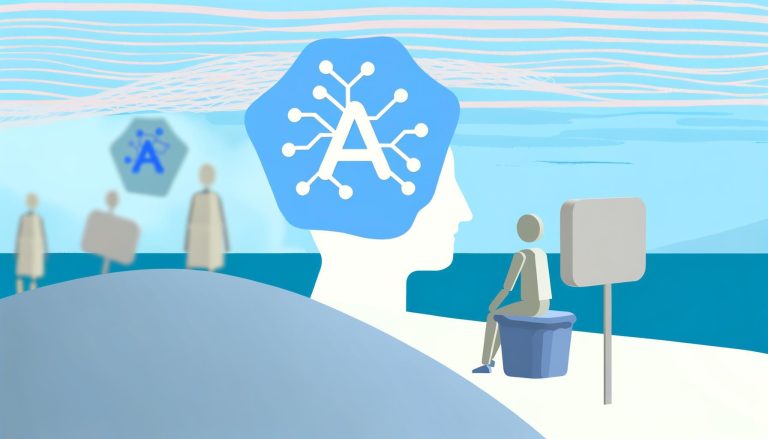Mindfulness meditation has been a cornerstone for mental clarity, emotional well-being, and stress reduction for centuries. But in our fast-paced digital world, integrating technology into mindfulness practices can enhance these benefits even further. This article explores how AI tools can augment mindfulness meditation, offering valuable insights and practical tips to maximize your mindfulness practice.
Introduction
In the hustle and bustle of modern life, mindfulness meditation serves as a sanctuary for many, helping to bring focus, serenity, and emotional balance. With the advent of advanced AI technologies, the landscape of mindfulness meditation is evolving, opening new avenues for enhanced mental well-being. This guide will navigate through various ways AI tools can enrich mindfulness practices, making them more effective and accessible.
Benefits of AI-Enhanced Mindfulness Meditation
Integrating AI into mindfulness meditation can significantly uplift one’s overall experience. Here’s how:
- Personalized Guidance: AI tools can tailor meditation sessions according to individual needs, skill levels, and goals. This customization ensures that each session is effective and relevant.
- Real-Time Feedback: AI-driven apps and devices can analyze user data in real time, offering immediate feedback on breathing patterns, heart rate variability, and other physiological metrics.
- Accessibility: AI tools can provide on-demand support, making mindfulness meditation accessible anytime, anywhere.
- Holistic Development: AI can integrate various interdisciplinary insights, supporting holistic mental and emotional growth.
AI Tools Improving Mindfulness Meditation
There are several AI tools designed to elevate mindfulness practice. Here are some prominent ones:
1. Meditation Apps
Meditation apps like Headspace and Calm are equipped with AI algorithms that adapt meditation sessions based on user preferences, previous sessions, and emotional states. These apps often come with features such as progress tracking, guided meditations, and community forums for support.
2. Wearable Devices
Wearable devices like Muse, Spire, and other biofeedback gadgets offer real-time physiological data, helping users understand their mental and emotional states better. These devices can track metrics like brainwaves, breath patterns, and heart rate to provide a comprehensive understanding of one’s physical responses during meditation.
3. Virtual Reality (VR) Experiences
VR mindfulness experiences use AI to craft immersive environments that can significantly enhance the meditation experience. By simulating serene landscapes and using guided meditation scripts, VR can transport users to a state of calm and focus, making mindfulness practice more profound.
4. Chatbots and Virtual Assistants
AI-driven chatbots and virtual assistants can offer personalized mindfulness coaching. They are capable of having conversations, answering questions, and providing real-time suggestions, helping users stay on track with their mindfulness routines.
How to Incorporate AI Tools into Your Mindfulness Practice
1. Set Clear Intentions
Before incorporating AI tools, it’s essential to define what you intend to achieve from your mindfulness practice. Whether it’s reducing stress, enhancing focus, or emotional regulation, having clear goals will help you choose the right AI tools.
2. Start Simple
Start with basic AI tools like meditation apps. Gradually, as you become more comfortable, integrate more advanced technologies like wearables or VR experiences.
3. Regular Monitoring
Use the data provided by AI tools to monitor your progress. Pay attention to metrics like heart rate variability, breath patterns, and progress reports from meditation apps. This information can offer valuable insights into your mindfulness journey.
4. Practice Consistency
Consistency is key to reaping the benefits of mindfulness meditation. Allocate a specific time each day for your practice, and use AI tools to remind and motivate you.
5. Seek Expert Guidance
If available, use AI tools that offer access to expert advice. Many platforms provide insights and tips from mindfulness coaches and therapists, helping you refine your practice.
Potential Challenges and Solutions
While AI tools offer numerous benefits, they also come with potential challenges:
- Over-Reliance: Relying too heavily on AI could overshadow the intrinsic aspects of mindfulness. It’s crucial to find a balance and not become overly dependent on technology.
- Data Privacy: AI tools often collect personal data, which could be a privacy concern. Always opt for tools with robust data protection measures.
- Technical Glitches: As with any technology, AI tools may experience technical issues. Always have a backup plan for these scenarios.
Conclusion
AI-enhanced mindfulness meditation is a promising frontier that combines the ancient wisdom of mindfulness with modern technological advances. By leveraging AI tools, individuals can gain personalized insights, receive real-time feedback, and enjoy enhanced accessibility to mindfulness practices. While it is essential to remain mindful of potential challenges, using AI tools can lead to a more enriched and effective mindfulness experience.
If you are looking to integrate mindfulness meditation seamlessly into your daily life, consider using apps that track your moods and habits, provide tailored meditation sessions, and offer real-time insights. Zenora, for instance, provides these features and can be a valuable companion on your mindfulness journey, helping you thrive mentally and emotionally.





